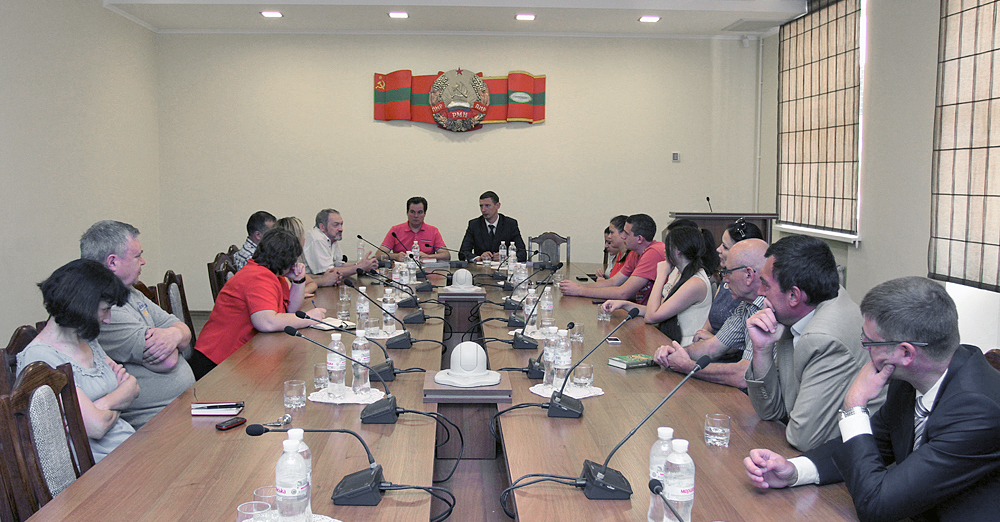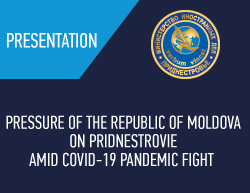The event was attended by Lev Gumilyov Centre representatives
Today, the Pridnestrovian State University held a round table discussion on “Pridnestrovie is a sacred territory of Eurasia”. Deputy Minister of Foreign Affairs of the PMR Igor Shornikov, Director of Moscow Lev Gumilyov Centre Pavel Zarifullin, Pridnestrovian experts-historian, archaeologists and students of the university took part in the meeting.
Welcoming the participants Igor Shornikov thanked the representatives of Lev Gumilyov Center for continuing interest in Pridnestrovie and active work of Russian researchers in the Pridnestrovian area. “Today it is very important to develop cultural and historical potential of the PMR in the context of creating a positive image of the country abroad”, said the deputy minister.
Leading researcher of the Scientific Research Laboratory “Archaeology”, candidate of historical sciences Vitaly Sinika presented a number of projects designed to activate the archaeological research on the territory of the PMR, as well as to contribute to the development of concepts of Pridnestrovie as an integral cultural and civilizational part of Eurasia. In particular, Vitaly Sinika presented a project on marking off important historical and cultural monuments through the establishment of a single electronic card. It is expected this will contribute to the preservation and promotion of cultural heritage of Pridnestrovie. In addition, it was proposed to create a series of documentaries about the archaeological sites of the country.
During the round table a question was raised also about the possibility of organizing the “sacred areas” on the territory of Pridnestrovie in order to promote the cultural, image-building and touristic potential of the PMR.
For reference: The sacred area is called an outlined part of the cultural landscape of the ethnos, which plays a critical role in the formation and functioning of the traditional world view of the people, the formation of its ethnic identity. The sacred territories may be presented by separate natural formations in the form of water sources, rivers, lakes, groves; cultural facilities (temple-burial complexes, architectural constructions), as well as the entire territories where natural and cultural elements form a common cultural landscapes identified and specially protected by the members of the ethno-cultural community.
Pridnestrovian land in scientific and applied sense is of interest for the Eurasian movement, as the traces of cultural and historical heritage of the Scythians, Cimmerians and Sarmatians are concentrated on the territory of the republic, and preserved to this day in the form of mounds, burial grounds and temple-burial complexes.
The view was expressed that the Dniester River with surrounding steppe and forest steppe areas, with ancient graves and monuments of architecture can be seen as a cultural landscape, which is an obvious natural and symbolic bearer and exponent of general principles of the traditional world view of Pridnestrovians as a particular historically created community.
As noted before, for example, these can be directly a scale funerary complex at the village Glinnoe, some kurgans (burial mounds) and memorial places. The routes of the ecological and scientific tours, spiritual and noospheric tourism and ecological and educational excursions may pass through the territory of the etnonatural park.
During the meeting the participants also discussed the research capacity of the Pridnestrovian historical heritage, prospects for the work in the area, and the practical steps of the scientific community for the implementation of the planned projects.
Source: http://eurasian.su/news/v-pgu-im-tg-shevchenko-proshel-kruglyy-stol-0










